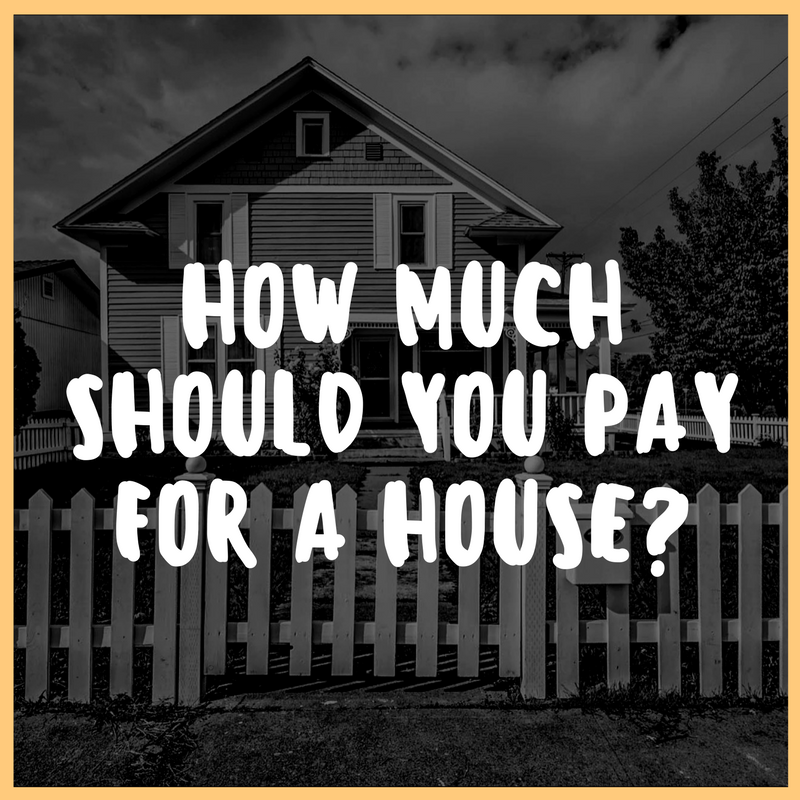“How do you value properties the right way?” One word that people are always trying to figure out is this magic word we call ARV, the ARV, how do we get the after repair value? If you’re looking to flip properties or if you’re looking to do some rental properties or whatever property you’re trying to work with, what is going to be the maximum value, the after repair value of this property once we’re done with it?
Now, here’s the thing, your whole business runs on ARV. If you get ARV wrong you are cooked. If it’s too high you’re in trouble, if it’s too low, you’re too low with ARV you can probably recover. This is the most important number in your business, this is the number one number that you have to know and this is why people always want to know how do I determine the property value the right way? Now, there’s three ways that we can do this.
Way number one, I call it Comps, and Comps is short for comparables. Comparables in residential real estate. I’m going to assume most of us are dealing with residential resale home so if we are looking at homes if we have … This is our home and if we are trying to determine the ARV of this home we will look to the MOS if we want find I would say 2-3 homes that are just like it that have sold in the last couple months. Depending on your market and how fast, how slow that market moves it might be acceptable for your market to go back three months for comparables, it might be six months, it might even be a year depending on how slow or how fast your market’s moving.
I’d like to say in the last six months for my market and my purposes, even better would be the last three months if things are changing. We want to know what has sold in the last little bit. Comparables are really interesting because realtors are not trained very well. In most areas realtors are trained very poorly. They give them one multiple choice test, they don’t really know real estate that well, they don’t know selling that well. It’s not really their fault for being so ignorant, it’s just they just don’t know what they don’t know.
When you ask for comparables they might give you three homes. Here you have an apple, I’m going to draw an apple. You have this home as an apple, this home is also an apple, then we have an orange, and then this thing down here is a banana. They send you three homes, apple, orange, banana, and you have an apple. Now unfortunately the orange and the banana don’t compare to the apple, we need apples to apples comps. What that means is they need to be the same on a few things. We need the same vintage. The same vintage is very simple. That’s within the same decade so a 1930s house match is a 1930s house. A 1940s house match is a 1940s house. You can’t match a 1920 to a 1960s, it doesn’t work like that.
We have to be within similar square foot of each other so I’d like to say within 300 square feet. You can adjust this number though, depending on your market. I like my comps to be within 300 square feet of each other. The next thing is we need similar style. You can’t take a one and a half story and compare it to a bungalow. You can’t take a two and a half story and compare it to a two story, one and three quarter story, very confusing style. You might have ranch style homes and then you might have a railroad style house or a colonial, these different types of homes, you can’t compare them. Again, apples have to go to apples. You can’t compare an apple to an orange or a banana. We’ve got a couple things there.
The next thing is, we have to be in the same neighborhood and we can’t be crossing any major barriers. We have five comps and they’re on the good side of the highway or the good side of the railroad tracks. One of the downside of railroad tracks, you can’t cross. If you have … Here’s your map, here’s the railroad tracks and you have three comps up here and one comp here, this one does not count like those ones do, they have to be in the same area. If you have a major street going here, these two go together, this one doesn’t. You can’t go across barriers with your comparables.
Comparables is one way to actually look at the homes on an MOS style. You can compare all these little things here. The second way, and this is one of my favorite ways and I find to be one of the easiest ways, is a visual approach. I will go on MOS, you can see the old pictures, you can see the new pictures. The pictures is one of the fastest ways to get the apples to apples and the apples to oranges. You can find out pretty quick if these homes actually match or not. Visual approach today is even better. We have things like Google. You can go on Google Street View and stand outside the home on the street from the comfort of your home. You can wear underwear and not even get dressed and you can see on Google what this home looks like.
Now, what also is great about Google is you can see sometimes what the home used to look like. If it’s old enough you can see it on Google. You can do a visual approach and figure do we have apples to apples or apples to oranges. Third way, and I find this to be a little bit less accurate, a little as good but also can be good when you need CMA, comparable market analysis. This is a statistical report. Statistics. This will take your apples, your oranges, everything and it will spit out a report. Now, this is going to give us a dollars per square foot. Now, here’s the problem with statistics. Statistics can lie sometimes, they can be manipulated. If you don’t have the right homes in there for the CMA sometimes this dollars per square foot can be off.
Now, the reason why that is is small homes get a bonus per square foot. Large homes get penalized. If you start mixing small homes, larges homes, all the homes, they might say over here is 200 a square, here’s a 175 per square in this area, this area might be 50 per square, and this area might be 100 per square, in the general area. CMA not really my favorite but depending on the data you have to work with my favorite would be like so. I would do every day of the week. This is my first, favorite choice is the visual approach. My second favorite would be to use the actual specimens. My third favorite choice would be to use the comparables or the CMA statistics because I find the statistics are a little bit less accurate.
Now, one more thing. You can’t always find the exact or the exact orange so sometimes what you have to do is come in here and do a couple adjustments. You have to come in, look at these things. Maybe you’ve got a garage or don’t have a garage, you got to sometimes adjust the prices. Maybe ARV comes in at 180 but is missing a garage so you take off 10 grand for the garage. Sometimes you get this … I was doing a deal today actually, for example, where the best comp was 170. Now I had a much newer vintage and I had a full basement so I adjusted it up 10 grand because a full basement is worth quite a lot in my market. Also, the newer vintage is usually worth a premium.
Sometimes you get all this together you don’t get the answer you want then you have to start making some adjustments. That, ladies and gentlemen, is how you determine property value the right way.
If you’re serious about getting started in real estate (without using your own money on properties or repairs) you need to check out: https://stefanaarnio.com/book


